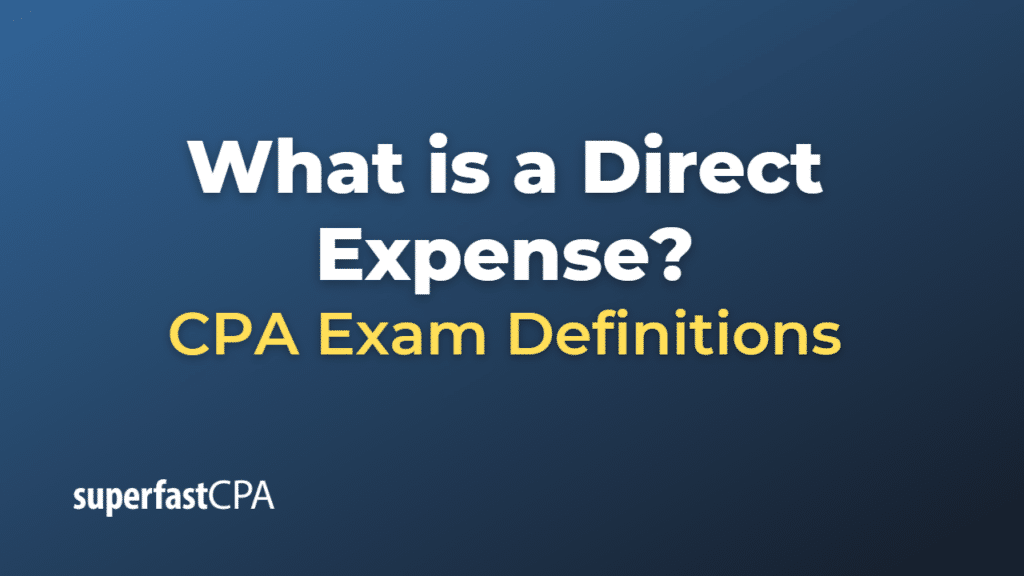Direct Expense
A direct expense is a cost that can be directly linked to a specific “cost object,” which can be a product, a department, a project, or any other part of a company that generates costs. In other words, if the cost wouldn’t exist without the cost object, it’s a direct expense.
Direct expenses are usually variable costs, meaning they change with the level of output. For instance, direct expenses in a manufacturing process might include raw materials, direct labor (wages of the workers physically making the product), and any other costs directly associated with the production of goods, such as factory utilities.
Contrast this with indirect expenses, which are costs that are not directly linked to a single cost object. These are often fixed costs and might include rent, management salaries, or general office supplies. These expenses are necessary for the operation of the business as a whole, but cannot be attributed directly to a specific department, project, or product.
The distinction between direct and indirect expenses is important for cost accounting and financial analysis, as it aids in pricing decisions, profitability analysis, budgeting, and financial reporting.
Example of a Direct Expense
Let’s take a look at a specific example involving a company that manufactures custom furniture.
Imagine a company, Custom Furniture Co., receives an order to create a unique dining table. There would be several direct expenses associated with this project:
- Raw Materials: The wood, paint, screws, and other materials used to create the dining table are direct expenses. If these materials cost $500, this is a direct expense since these costs can be directly linked to the production of the dining table.
- Direct Labor: The wages paid to the carpenter who crafts the dining table are also direct expenses. If the carpenter is paid $25 per hour and spends 20 hours on the project, the labor cost of $500 ($25/hour * 20 hours) is a direct expense.
- Equipment Costs: If Custom Furniture Co. uses a particular machine exclusively for this project, the cost associated with operating that machine (electricity, maintenance, etc.) during the project would be a direct expense. If it costs $100 to operate the machine for this project, that is a direct expense.
So, the total direct expense for this project would be the sum of all these costs, i.e., $500 (materials) + $500 (labor) + $100 (machine operation) = $1,100.
These costs are all directly attributable to the production of the unique dining table. They wouldn’t exist if the table wasn’t being made. Other costs, like the company’s rent, administrative salaries, or advertising costs, would be indirect expenses because they can’t be directly linked to the production of the table.













